The Untold Story of Ravana’s Abduction of Kausalya: A Prophecy That Changed Everything
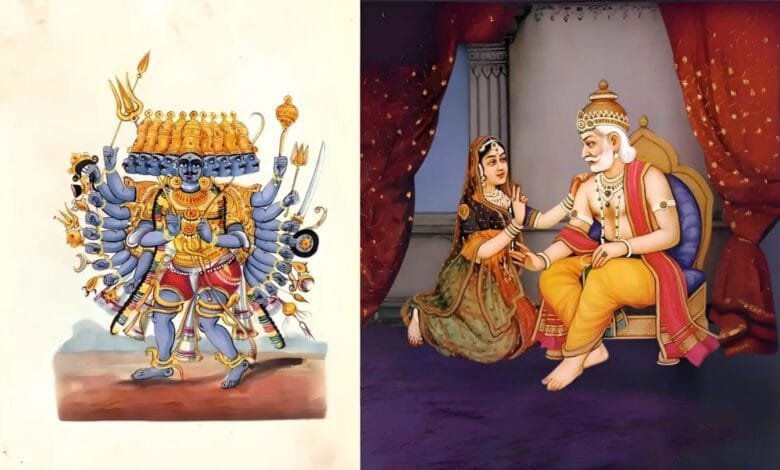
When we think of the Ramayana, the abduction of Sita immediately comes to mind. We all know how Ravana, the demon king of Lanka, kidnapped Goddess Sita to avenge his sister Shurpanakha’s humiliation. But what if I told you this wasn’t Ravana’s first abduction?
According to ancient texts, Ravana had previously kidnapped Queen Kausalya – Lord Rama’s mother – in a desperate attempt to prevent his own death. This shocking revelation changes everything we thought we knew about the epic.
Who Was Queen Kausalya? The Princess Who Became a Queen
Her Royal Heritage
Queen Kausalya wasn’t just any ordinary princess. According to the Valmiki Ramayana, she was first introduced as a queen who deeply desired a son – a wish so powerful that it led to the organization of the famous Putrakameshti Yagna (the ritual for obtaining sons).
Kausalya’s Background:
- Father: King Sakaushal
- Mother: Queen Amritprabha
- Kingdom: Koshal Pradesh (believed to be in present-day Chhattisgarh)
- Status: Princess of a prosperous kingdom
The Marriage That United Two Kingdoms
The story of how Kausalya became Queen of Ayodhya is fascinating in itself. Her marriage to King Dasharatha wasn’t arranged through the traditional swayamvara ceremony that was being planned. Instead, it came about through an unexpected turn of events involving war, defeat, and reconciliation.
The Rivalry Between Two Kings
When Enemies Became Friends
King Dasharatha and King Sakaushal started as bitter enemies. Their kingdoms were locked in rivalry, and tensions ran high between them.
Here’s how their relationship transformed:
The Peace Initiative: Dasharatha, being the wise ruler he was, extended an olive branch to Sakaushal, proposing peace between their kingdoms.
The Rejected Offer: Pride wouldn’t let Sakaushal accept. Instead of embracing peace, he challenged Dasharatha to war, confident in his military might.
The Decisive Battle: The war didn’t go as Sakaushal expected. Dasharatha’s forces defeated him decisively on the battlefield.
The New Alliance: Humbled by defeat, Sakaushal had no choice but to accept Dasharatha’s friendship. As their bond grew stronger, he made a momentous decision – he would give his daughter Kausalya in marriage to Dasharatha.
A Queen’s Honor
After their marriage, Dasharatha bestowed upon Kausalya the highest honor possible – he made her his Maharani (Chief Queen). This wasn’t just a title; it represented her position as the first and most honored of his wives.
The Prophecy That Changed Everything
What Did Brahma Foretell?
According to the Ananda Ramayana (an ancient version of the epic), there was a prophecy that struck fear into Ravana’s heart. This wasn’t just any prediction – it came from Lord Brahma himself, the creator of the universe.
The Prophecy: The son of Dasharatha and Kausalya would be the cause of Ravana’s death.
This divine proclamation became an obsession for Ravana. Despite all his power, his ten heads, his mastery over weapons, and his dominion over Lanka, he couldn’t escape the shadow of this prophecy.
Why Ravana Feared This Prediction
Ravana was no ordinary demon. He was:
- A great scholar who had mastered the Vedas
- A devotee of Lord Shiva
- A powerful king who had conquered the three worlds
- Nearly invincible due to boons he had received
Yet, this single prophecy haunted him. He knew that somewhere, a child would be born who would end his reign. And that child would be born to Kausalya.
Ravana’s Desperate Plot: The Abduction of Kausalya
The Plan to Prevent His Death
Ravana’s logic was simple but sinister: If Kausalya never had a son, the prophecy couldn’t be fulfilled. So he devised an elaborate plan to kidnap her and prevent the birth of his prophesied nemesis.
The Day of the Abduction
The timing of Ravana’s plan was calculated. He chose the day of Dasharatha’s marriage to Kaikeyi – a day when the kingdom would be celebrating, and security might be lax.
How the abduction unfolded:
- The Kidnapping: Ravana infiltrated Ayodhya and abducted Queen Kausalya without anyone noticing immediately.
- The Imprisonment: He locked her inside a box – a prison designed to be inescapable.
- The Exile: Ravana took this box to a desolate, uninhabited island far across the ocean, believing she would never be found.
- The False Victory: He returned to Lanka, convinced he had outsmarted destiny itself.
The Rescue Mission: A King’s Unwavering Love
Sage Narada’s Divine Intervention
Just when it seemed Ravana’s plan would succeed, Sage Narada – the celestial messenger who travels between worlds – intervened. He possessed knowledge of Ravana’s scheme and knew exactly where Kausalya was being held captive.
Narada approached King Dasharatha and revealed:
- Ravana’s treacherous plan
- Kausalya’s exact location
- The urgency of immediate action
Dasharatha’s Heroic Journey
Without wasting a moment, Dasharatha assembled his army and set sail for the remote island. What followed was an epic confrontation that showcased both the depths of Ravana’s power and the strength of Dasharatha’s determination.
The Battle at the Island
When Two Armies Clashed
The battle between Dasharatha’s forces and Ravana’s demonic army was catastrophic.
The Overwhelming Odds:
- Ravana’s rakshasa (demon) army possessed supernatural powers
- They were fierce, merciless, and nearly unstoppable
- Dasharatha’s human soldiers, despite their bravery, were no match
- The battle resulted in devastating losses for Ayodhya’s forces
A King’s Courage Against Impossible Odds
Most kings would have retreated when their army was destroyed. But Dasharatha wasn’t most kings. His love for Kausalya and his duty as a husband drove him forward.
The incredible survival:
- His entire army was decimated
- He found himself alone in the vast ocean
- Clinging to a wooden plank, he refused to give up
- He floated across treacherous waters, driven by sheer willpower
- Finally, he reached the island where Kausalya was imprisoned
The Rescue
When Dasharatha finally reached the box where Kausalya was confined, he broke her free from her chains. Despite having lost everything – his army, his ships – he had succeeded in the only mission that mattered: saving his beloved queen.
Together, they made the perilous journey back to Ayodhya, arriving safely at their palace.
Destiny Cannot Be Denied
The Birth That Was Meant to Be
Despite Ravana’s elaborate scheme, Lord Rama was eventually born to Dasharatha and Kausalya. No amount of planning, power, or manipulation could prevent the prophecy from unfolding.
Along with Rama, Dasharatha’s other sons were also born:
- Bharata (to Queen Kaikeyi)
- Lakshmana and Shatrughna (to Queen Sumitra)
But it was Rama – Kausalya’s son – who would fulfill the ancient prophecy.
The Prophecy Fulfilled
Years later, after Ravana abducted Sita (repeating his pattern of abduction), Lord Rama waged war against Lanka. In the epic battle that followed, Rama defeated and killed Ravana, exactly as Brahma had foretold.
The demon king’s attempts to escape his fate had been futile. In fact, by trying to prevent the prophecy, he may have set in motion the very events that ensured its fulfillment.
Understanding Different Versions of the Ramayana
Where Does This Story Come From?
This particular narrative about Kausalya’s abduction appears in the Ananda Ramayana, one of several versions of the epic that exist across India and Southeast Asia.
Major Ramayana versions include:
- Valmiki Ramayana – The original Sanskrit epic
- Ananda Ramayana – Contains additional stories and details
- Adhyatma Ramayana – Focuses on spiritual interpretations
- Ramcharitmanas – Tulsidas’s Hindi version
- Kamba Ramayanam – The Tamil version
Each version adds unique perspectives and stories while maintaining the core narrative of Rama’s life and his victory over Ravana.
Why Multiple Versions Exist
The Ramayana has been told and retold for thousands of years across different regions, cultures, and time periods. Each retelling adds local flavor, philosophical insights, and sometimes entirely new episodes while preserving the essential message of dharma (righteousness) triumphing over adharma (unrighteousness).
The Deeper Meanings Behind This Story
Theme 1: The Inescapability of Destiny
One of the most powerful themes in this story is that destiny cannot be avoided through manipulation or force. Ravana, despite his immense power and intelligence, couldn’t escape what was written in his fate.
This teaches us:
- Our actions have consequences that cannot be undone
- Trying to cheat destiny often leads to its fulfillment
- True wisdom lies in accepting and understanding our path, not fighting it
Theme 2: The Power of Righteousness
King Dasharatha’s determination to rescue Kausalya, even after losing his entire army, demonstrates the triumph of dharma over adharma.
Key lessons:
- Love and duty provide strength beyond physical power
- Righteousness gives courage to face impossible odds
- Moral conviction can overcome superior force
Theme 3: Fear-Driven Actions Lead to Destruction
Ravana’s abduction of Kausalya was driven entirely by fear of the prophecy. This fear-based decision set in motion events that ultimately led to his downfall.
The cycle of fear:
- Ravana hears the prophecy
- Fear drives him to abduct Kausalya
- His actions create enmity with Dasharatha’s lineage
- This enmity continues to the next generation
- His later abduction of Sita (Rama’s wife) brings about his prophesied death
Theme 4: Divine Justice Prevails
No amount of cunning, strength, or supernatural power can overcome divine justice. The story reinforces the Hindu concept of cosmic justice – that the universe has an inherent moral order that eventually restores balance.
What This Story Adds to Our Understanding of Ramayana
A More Complex Ravana
This narrative presents Ravana as more than just an arrogant villain. It shows him as:
- Someone aware of his mortality
- Capable of strategic thinking and long-term planning
- Desperate enough to take extreme measures
- Ultimately human in his fears, despite being a demon king
The Long Shadow of Prophecy
The story reveals that the conflict between Rama and Ravana wasn’t just about Sita’s abduction. It was the culmination of a destiny set in motion long before Rama was even born. The abduction of Sita becomes the final chapter in a story that began with the abduction of Kausalya.
Dasharatha’s Heroism
Often, Dasharatha is remembered primarily as Rama’s father or for his controversial decision to exile Rama. This story highlights his own heroism and unwavering devotion to his queen, adding depth to his character.
Life Lessons from This Ancient Tale
1. Face Your Fears
Ravana’s attempt to run from his prophesied death only ensured it happened. When we face our fears head-on instead of trying to avoid them, we often find they have less power over us than we thought.
2. Love Conquers All
Dasharatha’s love for Kausalya gave him strength to survive when his entire army couldn’t. True love provides courage and resilience that transcend physical limitations.
3. Destiny vs. Free Will
While the story emphasizes destiny, it also shows that our choices matter. Ravana chose to act out of fear and selfishness. Dasharatha chose to act out of love and duty. Both faced their destinies, but in very different ways.
4. The Ripple Effects of Our Actions
Ravana’s abduction of Kausalya created ripples that extended through generations. Our actions today shape not just our future but the future of those who come after us.
5. Humility Over Pride
Ravana’s fatal flaw was his pride – believing he could outsmart divine will. Dasharatha’s strength came from his humility and devotion. The story teaches us that humility is a greater virtue than pride in one’s power or intelligence.
Historical and Cultural Context
The Geography of the Story
The story mentions several geographical locations:
- Koshal Pradesh – Kausalya’s homeland (possibly in modern Chhattisgarh)
- Ayodhya – Dasharatha’s capital (in present-day Uttar Pradesh)
- Lanka – Ravana’s kingdom (traditionally associated with Sri Lanka)
- The unnamed island – Where Kausalya was imprisoned
The Era of the Ramayana
According to Hindu tradition, the Ramayana took place in Treta Yuga, the second of the four great ages. Different scholars date these events anywhere from 7,000 to 5,000 BCE, though exact dating remains a matter of debate between religious tradition and archaeological evidence.
How This Story Connects to the Main Ramayana
The Pattern of Abduction
Ravana’s abduction of Kausalya establishes a pattern:
- First abduction: Kausalya (to prevent the prophecy)
- Second abduction: Sita (to avenge Shurpanakha)
Both abductions were motivated by Ravana’s ego and fear, and both ultimately led to his downfall.
The Seeds of Vengeance
Some interpretations suggest that Ravana’s treatment of Kausalya created a karmic debt that would later manifest in his conflict with Rama. The violence and injustice he committed against Rama’s mother set the stage for their eventual confrontation.
The Role of Divine Plan
The story suggests that every event in the Ramayana was part of a larger divine plan:
- Vishnu’s decision to incarnate as Rama
- Ravana’s terror over the three worlds
- The need to restore dharma
- The ultimate defeat of evil
Kausalya’s abduction becomes one more thread in this cosmic tapestry.
FAQs About Kausalya’s Abduction
Q: Is this story in the original Valmiki Ramayana?
A: No, this particular story appears in the Ananda Ramayana, not in Valmiki’s original text. However, it’s considered part of the broader Ramayana tradition.
Q: Why isn’t this story more widely known?
A: The Valmiki Ramayana is considered the primary source, so stories from other versions don’t receive as much attention. Also, this story requires knowledge of multiple Ramayana texts.
Q: Did Ravana and Dasharatha ever meet in battle?
A: According to the Ananda Ramayana, yes – during the rescue of Kausalya. However, most Ramayana versions don’t mention direct combat between them.
Q: How did Sage Narada know about Ravana’s plan?
A: As a celestial sage who travels between all worlds, Narada possesses divine knowledge and often serves as a messenger of the gods, making him aware of events across the universe.
Q: What happened to Ravana after this failed abduction?
A: He returned to Lanka and continued his rule until his eventual confrontation with Rama years later.
Discover more from Sanatan Roots
Subscribe to get the latest posts sent to your email.
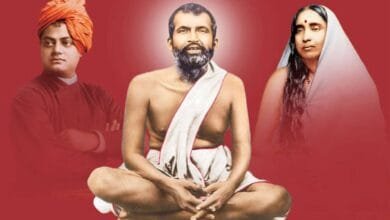
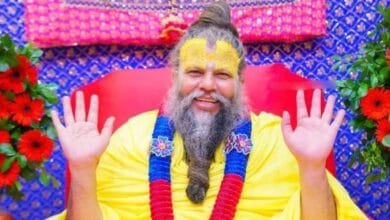
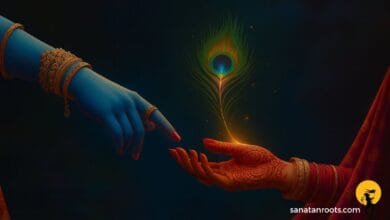
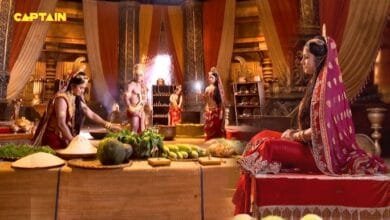
One Comment